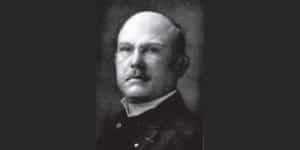Clayton Alderfer biography and theory

Clayton Alderfer ABPP (1940) is an American psychologist, speaker, writer, entrepreneur, consultant and scholar. Clayton Alderfer has become famous with his ERG Theory. The starting point for the development of this theory is Maslow’s hierarchy of needs which he further expanded into the ERG theory based on empirical research (1966-1989).
Biography Clayton Alderfer
In 1962, Clayton Alderfer obtained his Bachelor’s degree with high honours from the Yale University in the United States of America. In 1966, he obtained his Ph.D. also from Yale University.
In 1975 Alderfer received a diploma in psychology (area of expertise: organizational consulting) from the American Board of Professional Psychology (ABPP).
After he had completed his studies, Clayton Alderfer joined Cornell University briefly (1966-1968). Then he joined Yale University where he was a faculty member for 24 years (1968-1992). Here, he held appointments such as lecturer, researcher and programme director.
During these years he carried out empirical research into three human needs, namely: Existence Needs, Relatedness Needs and Growth Needs. The ERG theory that Clayton Alderfer had developed was ground-breaking and is still discussed today in many management books.
After 1992, Alderfer joined Rutgers, a university in New Jersey in the United States of America. For twelve years he served as a Director of Professional Studies and he played an important part in advancing the faculty programme.
Clayton Alderfer eventually became more interested in working as a consultant and he set up his own consulting firm: Alderfer and Associates. This organization still exists today and provides organizational diagnoses and consultation services for organizations in the private, not-for-profit and public sectors.
Publications and books
- 2010. The practice of organizational diagnosis: Theory and methods. Oxford University Press.
- 2005. The Five Laws of Group and Intergroup Dynamics.
- 2003. Diversity in organizations. Comprehensive Handbook of Psychology, Vol. 12: Industrial & Organizational Psychology (pp. 287-293). New York, NY: Wiley.
- 2002. Diversity in organizations. Handbook of psychology.
- 2002. An empirical study of parallel processes during organic questionnaire administration. Journal of Applied Behavioral Science, 38, 416-435.
- 1997. Embedded intergroup relations and racial identity development theory. Racial identity theory: Applications to individual, group, and organization interventions, 237-263.
- 1994. A white man’s perspective on the unconscious processes within black–white relations in the United States.
- 1992. The race relations competence workshop: Theory and results. Human Relations, 45(12), 1259-1291.
- 1992. Changing race relations embedded in organizations: Report on a long-term project with the XYZ Corporation.
- 1989. Theories Reflecting My Personal Experience and Life Development. The Journal of Applied Behavioral Science, 25(4), 351-365.
- 1988. Teaching personality & leadership. Organizational Behavior Teaching Review, 12, 12-33.
- 1988. Understanding & consulting to family business boards. Family Business Review, 1, 249-261.
- 1988. The significance of race and ethnicity for understanding organizational behavior.
- 1987. An Intergroup Perspective on Group Dynamics. Handbook of Organizational Behavior, 190-222.
- 1986. The invisible director on corporate boards. Harvard Business Review, 64, 38-52.
- 1983. Black and White cognitions of changing race relations in management. Journal of Occupational Behaviour.
- 1982. Studying intergroup relations embedded in organizations. Administrative Science Quarterly, 35-65.
- 1982. Problems of changing white males’ behavior and beliefs concerning race relations. Change in organizations, 122, 165.
- 1980. Diagnosing race relations in management. Journal of Applied Behavioral Science, 16, 135-166.
- 1980. The methodology of organizational diagnosis. Professional Psychology, 11(3), 459.
- 1980. Consulting to underbounded systems. Advances in experiential social processes, 2, 267-295.
- 1980. Advances in experiential social processes (Vol. 2). John Wiley and Sons.
- 1979. Life experiences and adults’ enduring strength of desires in organizations. Administrative Science Quarterly, 347-361.
- 1978. Advances in Experiential Social Processes. John Wiley and Sons Ltd.
- 1977. Improving organizational communication through long-term intergroup intervention. Journal of Applied Behavioral Science, 13, 193-210.
- 1977. Organization development. Annual review of psychology, 28(1), 197-223.
- 1977. Group and intergroup relations. Improving the quality of work life, 227, 296.
- 1977. A critique of Salancik and Pfeffer’s examination of need-satisfaction theories. Administrative Science Quarterly, 658-669.
- 1976. Boundary relations and organizational diagnosis. Humanizing organizational behavior, 142, 175.
- 1975. Learning from changing: Organizational diagnosis and development. Sage Publications.
- 1974. The effect of variations in relatedness need satisfaction on relatedness desires. Administrative Science Quarterly, 507-532.
- 1973. The Relevance of Human Intellect and Organizational Power for Organizational Development. PN.
- 1973. Three studies of measures of need satisfaction in organizations. Administrative Science Quarterly, 489-505.
- 1973. The tensions between research and intervention in intergroup conflict. The Journal of Applied Behavioral Science, 9(4), 424-449.
- 1973. A New Design for Survey Feedback. PN.
- 1972. Designing an” empathic questionnaire” for organizational research. Journal of Applied Psychology, 56(6), 456.
- 1972. Existence, relatedness, and growth: Human needs in organizational settings. New York, NY.
- 1972. Understanding the impact of survey feedback. The Social Technology of Organization Development. Fairfax, Virginia: NTL Learning Resources Corp, 234-243.
- 1971. Change processes in organizations. YALE UNIV NEW HAVEN CONN DEPT OF ADMINISTRATIVE SCIENCES.
- 1971. Effect of individual, group, and intergroup relations on attitudes toward a management development program. Journal of Applied Psychology, 55(4), 302.
- 1971. A quasi experiment on the use of experiential methods in the classroom. The Journal of applied behavioral science, 7(1), 43-69.
- 1970. Personal and situational factors in the recruitment interview. Journal of Applied Psychology, 54(4), 377.
- 1970. Choices with risk: Beyond the mean and variance. Journal of Business, 341-353.
- 1969. An empirical test of a new theory of human needs. Organizational behavior and human performance, 4(2), 142-175.
- 1968. Comparison of questionnaire responses with and without preceding interviews. Journal of Applied Psychology, 52(4), 335.
- 1967. An organizational syndrome. Administrative Science Quarterly, 440-460.
- 1967. Convergent and discriminant validation of satisfaction and desire measures by interviews and questionnaires. Journal of Applied Psychology, 51(6), 509.
How to cite this article:
Van Vliet, V. (2013). Clayton Alderfer. Retrieved [insert date] from Toolshero: https://www.toolshero.com/toolsheroes/clayton-alderfer/
Published on: 11/17/2013 | Last update: 03/23/2023
Add a link to this page on your website:
<a href=”https://www.toolshero.com/toolsheroes/clayton-alderfer/”>Toolshero: Clayton Alderfer</a>











